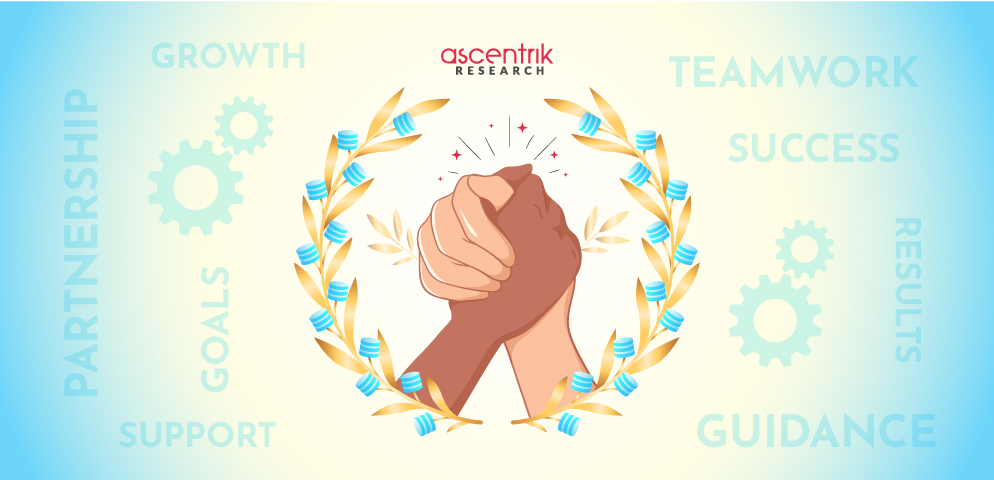
CRM data enrichment for maximising your marketing and sales outreach, and targeting qualified leads
Published on 8th March,2021 Last Updated on 11th December,2023
What is CRM data enrichment?
CRM data enrichment is the process of cleansing, appending, and enhancing the data in your CRM that gets collected through marketing campaigns or sales efforts. It strengthens the value of your data by making it richer. The crm data enrichment process allows companies to augment third-party data and consolidate existing data points by connecting it with external data sources from contact lists, social media, and other third-party providers. This helps build accurate, insightful information on their customer records.
TARGETING NICHE SEGMENTS
The value of granular information in CRM enrichment
A CRM generally holds basic contact information such as names, email addresses, phone numbers, etc. However, businesses need more information to know their customers better. For instance, where does a customer work? What is their job title? What is their favourite tech brand? What is their marital status or income level? Such demographic and firmographic information helps with CRM enrichment, allowing the organisation to get deeper insights about its customers, which it can use to increase sales and marketing performance.
CRM DATA CLEANSING
The value of data quality in CRM data enrichment
For the crm enrichment process to be successful, the key component of data quality needs to be prioritised. This is the process of CRM data cleansing which gives you clean, reliable, usable data. Data naturally gets stale in a matter of weeks or even days, as people keep changing jobs. People fail to update their details on social media like Linkedin, or they may enter misspelt details in website forms. This is why crm data cleaning is the first and most important step.
This process is used by companies to firstly keep data fresh and clean, and then update it with any information that gives a granular picture of the customer.
This post will help you understand the role of data cleansing and data enrichment in maintaining the health of your CRM database, and why it’s so important to focus on data quality.
How inaccurate data can hurt your crm performance?
When you don’t have enough information on your leads to reach out to them, then you’re missing out on opportunities for more revenue and growth. But the cost of inaction isn’t just about the lost opportunities from incomplete data. There’s also the risk of wrongly targeted prospects.
Wastage of time and effort in pursuing wrong leads, or marketing to them with wrong messaging is the most immediate downside of a stale CRM database. In the long run it can also affect your company’s reputation in the eyes of existing and potential customers.
When you stop wasting time and effort on chasing the wrong leads, it eventually boosts productivity, revenue and growth.
Some of the specific issues a company can face without an enriched CRM database are listed below:
— Lost opportunities
Incorrect data is one of the biggest reasons for losing sales opportunities for businesses. Besides, it also wastes marketing spend and results in dissatisfied customers.
Therefore, businesses must prioritise data accuracy and invest in crm enrichment techniques to mitigate these risks.
— Bad decisions
Your customer database is the primary reference point for sales and marketing teams when making a decision. Inaccurate data will lead the sales and marketing teams to take wrong steps like incorrect resource allocation, and pursuing wrong leads. For example, bad data will lead to bad lead-scoring decisions, which might mean that the right prospects don’t get the attention they deserve from your sales team. Inaccurate customer profiles, will lead your marketing team to make a whole lot of bad moves when attracting new customers.
— Obstacle to automation
Automation enables scalability and faster growth. When your CRM platform is automated and integrated with other systems, your marketing and sales teams can spend more time on reaching out to the right prospects through targeted campaigns.
However, to trust the results of your automated procedures, you need to trust your CRM data quality. Gaps and errors in your datasets will keep hindering any automated process making it inefficient.
Thus we see that stale and inaccurate data results in wasted time, money and effort, as well as missed opportunities.
Benefits of CRM enrichment
— Improving Customer Experience, Retention and Upsell:
CRM data enrichment creates visibility into existing buyers: their habits, preferences and personality traits. This information can help businesses to anticipate their needs early, identify red flags and potential signs of attrition and provide proactive customer support to retain their business. This improves existing customer experience.
It can equally play a role in improving customer lifetime value (CLV) by providing the insights to justify inclusion in upselling and cross-selling campaigns for new product launches.
— Generate more prospects at scale
CRM data cleansing and enrichment provides updated lead data at scale, meaning your ops teams can draw more accurate data insights. You can then tailor your sales, increase cross-sell and upsell opportunities,
There is a lot of untapped value in many sales funnels. There are leads that go unnoticed, and crm data enrichment can bring them to light. For example, a person might have reached out a few years ago, and then reached out again after moving to a different company. This makes that person a hotter lead than others, and requires immediate attention from the sales team.
— Segmentation
Complete data is a critical component of segmentation. It provides businesses with the necessary information to separate customers into very specific groups and target them with messaging and offers. By segmenting its customer base based on shared characteristics, such as demographics, behaviours, or interests, a business can improve the effectiveness of its marketing campaigns and increase customer engagement and loyalty.
However, this only works when the CRM database is complete and enriched with accurate and up-to-date information. Incomplete or outdated data can lead to inaccurate segmentation, resulting in ineffective messaging and wasted resources.
— Lead Scoring
Ranking and evaluating your leads help you define clear goals for your customer success team. With crm data enrichment, you can create in-depth customer account profiles prioritised more appropriately and accurately.
All in all, it allows you to assign precise and meaningful scores to your leads. Additionally, it enables your sales and marketing department to align and discover the most useful data sets for lead account scoring.
— Personalization In Lead Generation
CRM database enrichment empowers you to tailor your marketing and sales interactions to each individual customer’s needs and preferences. This increase in personalisation is very useful when targeting decision-makers or prospects. It is also useful throughout the customer lifecycle, delivering enhanced customer service, improved communication, and increased customer retention.
For example, having location information about prospects allows you to segment them based on geography. Then you can deliver personalised campaigns that mention things specific to their locality. But without this information, a prospect might receive marketing materials that are more generic and less effective. When this strategy is applied across the entire database it’s easy to see how personalization can impact your bottom line.
— Improved marketing ROI:
Targeted marketing campaigns driven by enriched customer data and personalised messaging are more likely to be effective. They increase conversion rates and yield a higher return on investment.
Types of CRM data that needs cleaning
A big challenge in CRM data cleaning is identifying the type of data to clean. The most commonly identified records to clean are those with obvious errors, like wrong spellings, missing dates, or incomplete fields. But bad data is more complex and involves a wider range of data.
When you begin to clean CRM data, you can categorise the data type into six key areas:
Customer Demographics like name, age, gender, location, and occupation.
Contact details of customers, such as email addresses, phone numbers, and postal addresses.
Purchase history like product name, price, date, and quantity.
Data related to customer interactions and engagement with your business, such as website visits, email opens, and social media activity.
Sales data like revenue, deals won/lost, and pipeline activity.
Customer Service Interactions like support tickets, chat logs, and call recordings.
Types of dirty data that needs cleaning
Duplicate data which is multiple records for the same customer, with conflicting or inconsistent information.
Missing or incomplete information for customers or records.
Outdated information that is no longer accurate or relevant, such as outdated contact details or purchase history.
Data with formatting Inconsistencies, such as variations in spelling or capitalization, or inconsistent date formats.
Invalid data that does not conform to expected patterns or values, such as a phone number with letters or a birthdate in the future
Identifying these signs of stale data is critical for maintaining the accuracy of your CRM database. To do so, you may need to leverage various crm data cleaning methods. Identifying and fixing errors in data records using traditional methods like Excel is not feasible. If you’re a marketer or a CRM manager, you may need to depend on IT teams to clean this data, and this dependency needs to be reduced.
CRM data cleansing and enrichment methods and best practices
Now that you have identified the types of data that need cleaning, we can move into the techniques and best practices for cleaning and enriching your CRM database.
Data Standardisation
One of the most critical steps in crm data cleansing is standardising your data. This involves establishing a consistent format for data across your entire CRM database, such as ensuring that phone numbers are formatted in the same way or that state names are abbreviated consistently. Standardising data can help you eliminate duplicates and inconsistencies, making it easier to identify patterns and trends in your data.
Deduplication
Deduplication is another critical step in crm data cleaning. This involves identifying and removing duplicate records from your CRM database, which can result from data entry errors, customer updates, or other factors. Removing duplicates can help you avoid sending multiple communications to the same customer and can also reduce confusion when analysing data. Duplicates usually occur when you have more than one person handling data entry or when you have the same customer filling their information in more than one way (from the website or from an app). Either ways, removing duplicates is necessary to ensure the accuracy and reliability of your CRM data.
Data Validation and Verification
Data validation and verification are critical steps in ensuring that your customer database remains clean. By validating and verifying your data, you can catch errors and inconsistencies in real-time and prevent them from entering your database. Verify customer data against external data sources like government databases or credit bureaus to ensure accuracy.
Data Append
Data appending is the process of adding new, relevant information to your CRM database, such as customer demographics or behavioural data. By appending your data, you can gain a deeper understanding of your customers, allowing you to create more targeted and effective marketing campaigns.
Data appending is often seen as a part of crm data cleansing because it involves adding missing or incomplete data to your database, which can help to fill in gaps in your customer profiles and provide a more complete picture of your audience.
For example, let’s say you have a CRM database with basic customer information, such as names and contact details. By enriching this data with information on customer demographics, such as age, gender, and income level, you can gain valuable insights into your target audience, allowing you to tailor your marketing efforts more effectively.
Regular Data Maintenance
CRM data cleansing is not a one-time activity. Every day, your CRM is updated with dozens of leads and new information, which means you need to make CRM data cleansing a routine activity.
Let’s say a customer has moved and their address information is no longer accurate. By regularly reviewing your CRM data and updating this information, you can ensure that your communications reach the correct address and that you maintain a positive relationship with the customer.
How does CRM data enrichment benefit your company?
Enriched CRM data can help businesses fill in the gaps and verify the accuracy of existing data. Enriched CRM data can help businesses bring data together to build a richer profile of their prospects and clients. This can help businesses understand their clients and forge deeper connections with them. Additionally, crm enrichment can assist organisations in developing specialised marketing efforts.
In summary, enriched CRM data can help businesses gain more insights, make more informed decisions, and build a richer profile of their prospects and clients. It can also help businesses identify the ideal customer profiles, improve lead scoring and account scoring models, and develop specialised marketing efforts.
Custom or bespoke data enrichment services for your CRM database
Custom or bespoke crm data enrichment services can help businesses gain a competitive edge by providing them with unique and tailored data that is specific to their industry, target audience, and business goals. These services can help businesses identify the ideal customer profiles from the piles of data sets and engage them strategically.
Choosing the Best B2B Data Providers for Accurate Email Lists
[dsm_perspective_image src="https://www.ascentrik.com/wp-content/uploads/2024/02/top-B2B-database-providers.jpg" alt="Choose from among the best contact data providers" title_text="Evaluate the top B2B database providers in UK and US" align="center"...
What are the best data enrichment tools for marketers and are they effective in converting leads?
[dsm_perspective_image src="https://www.ascentrik.com/wp-content/uploads/2023/08/data-enrichment-tools-and-leads-conversion.jpg" alt="Best Data Enrichment, Data Validation and Data Cleaning tools" title_text="Data Enrichment tools and Leads Conversion with 100%...
Ascentrik Growth Story 2022 2023
B2B Data validation and enrichment is the practice of refining your existing CRM database by eliminating redundant and unwanted contact information and appending additional data points to your prospects’ records like phone numbers, industry, size of the company, designation, etc. It is one of the most beneficial practices for both your marketing and sales teams.
Refreshing your email list can be seen as an ongoing process during your marketing campaigns, as it allows you to source highly qualified leads, which enables targeting the right person with the right message. It can help your sales team with customer segmentation and lead scoring, allowing them to create personas for your prospects and craft a personalised sales pitch, improving the chances of converting them into customers.
But what is the most profitable method to get this highly valuable task done? Is it software tools for automated data enrichment or tools enhanced with data research by a team of experts? Find out the benefits of both in the article below.


